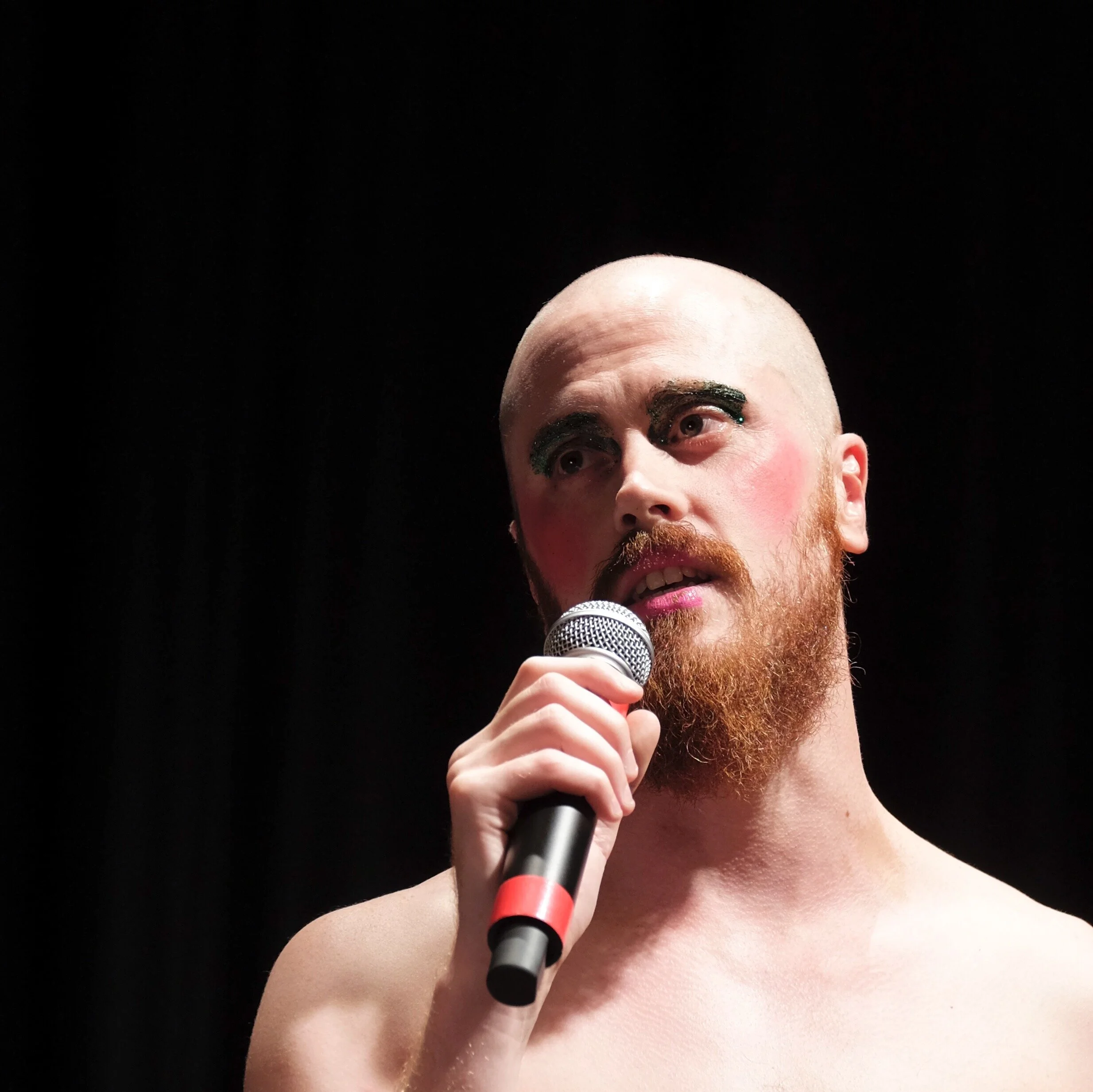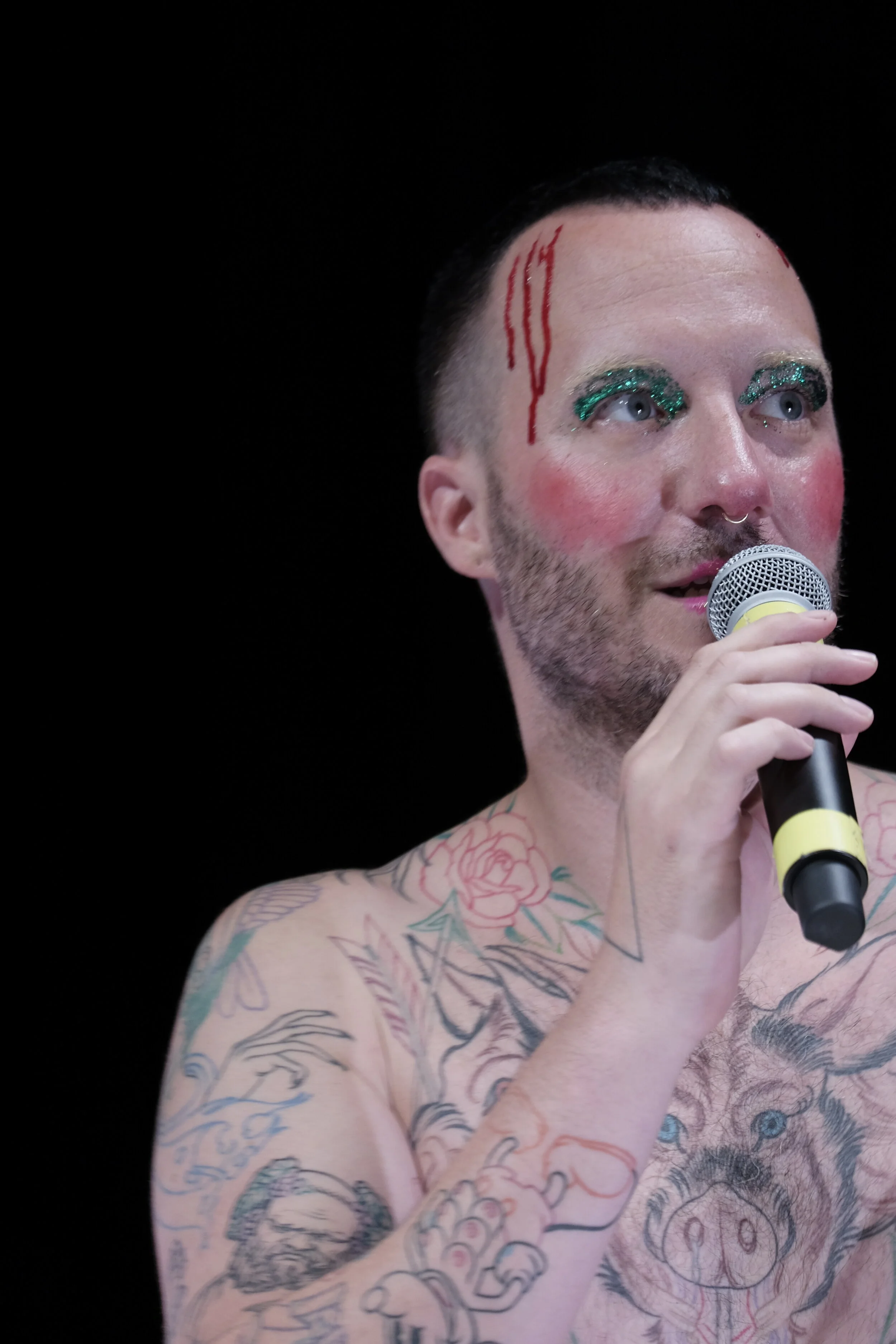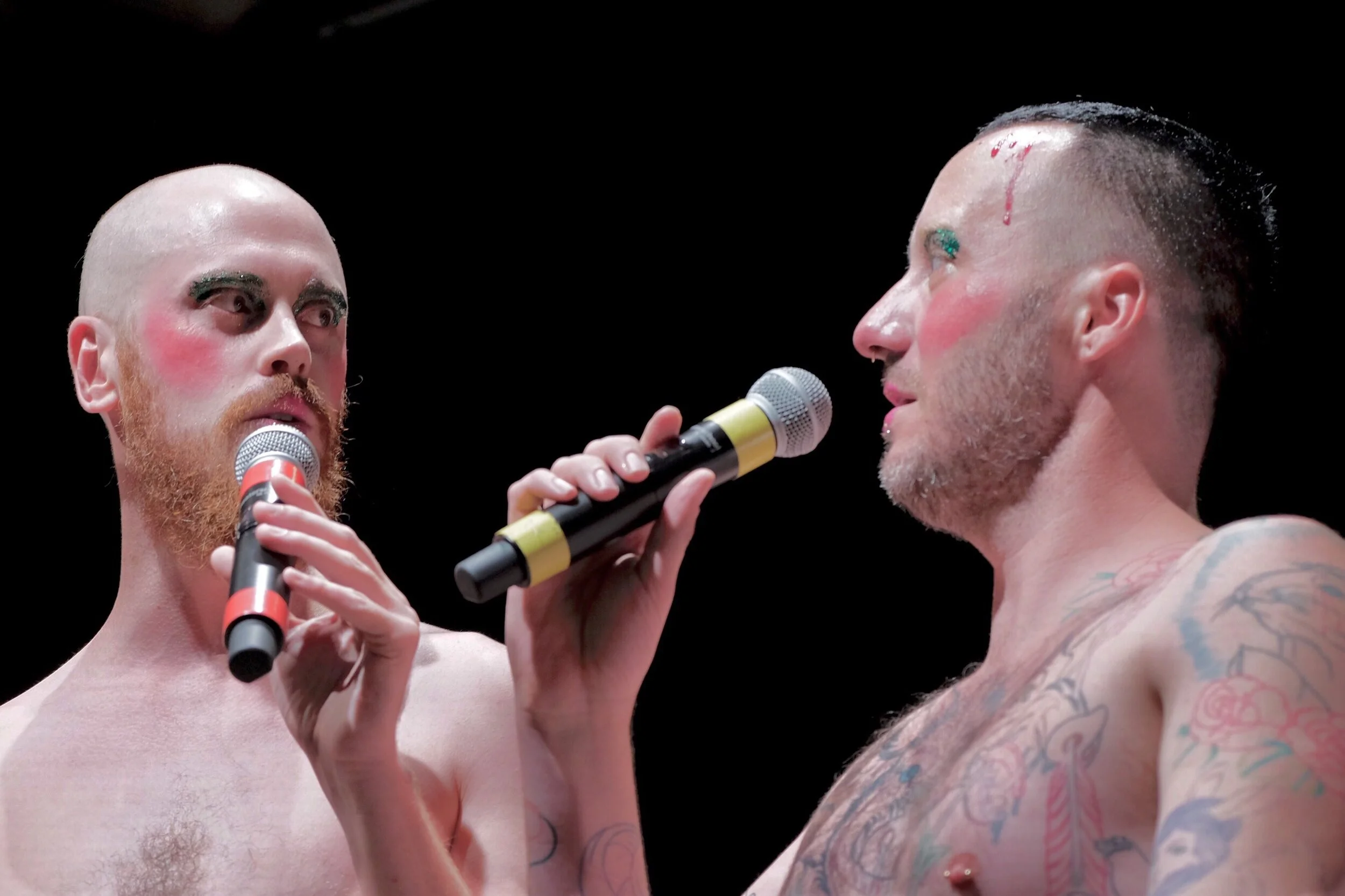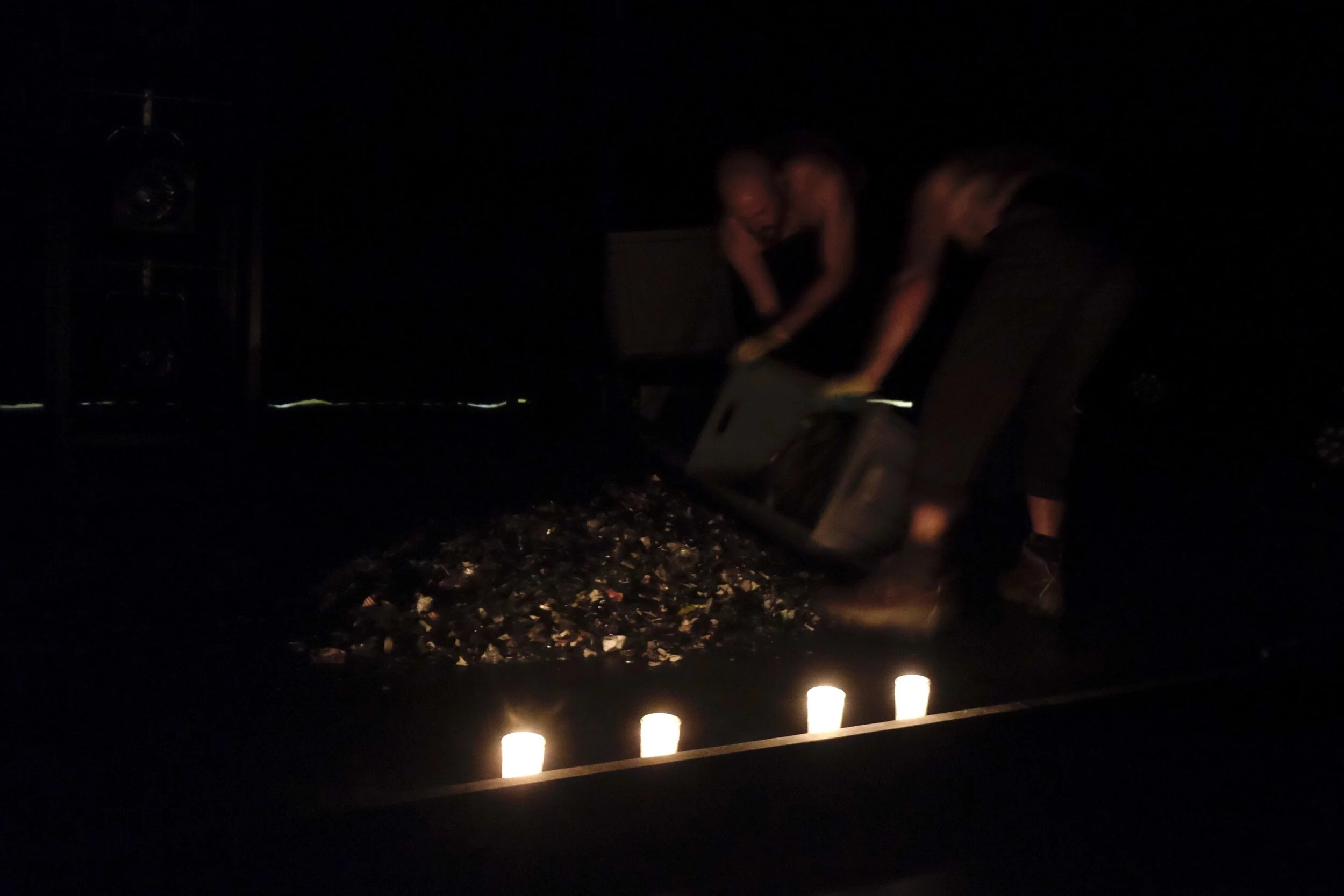
aon mhac tíre, nó roinnt mic tíre
le / with Mica Sigourney
“499 km theorainn á siúl – mar ní raibh fhios againn cad a bhí ag tarlú.”
Eipic Miotaseolaíoch Aerach Éireannach i dtrí chuid; ar dtús an tsiúlóid, den dara an dán agus sa triú dísréad le cadhc.
Baile Átha Cliath, Dún Dealgan, Béal Átha Conaill, Dúthamhlacht, Annaghmakerrig, Cluain Eois, Newtownbutler, Inis Ceithleann, Beéal Cú, Loch Naman, Béal Leice, Béal Átha Seanaidh, Paiteagó, Loch Dearg, An Doire, Port a Doras.
Ag teacht abhaile. Ag fágáil. Ag teacht agus ag imeacht.
///
A queer Irish Epic in three parts
Two Queers walked the border between the Republic and The North. Both Irish but one American. They made a dance duet. This is the poem from that performance put down on pages.
The duet traces a border, looking for midlands, mid folks and in-betweeners. It describes the familial lineages of an Irish emigrant and an Irish native, both aerach; both with aspirations to discover or uncover joing futures by squinting at their different pasts.
amtnrmt is a performance in three language sets: Gaeilge, English and Dance.
Ag teacht abhaile. Leaving. Coming and going.







Aithníonn an eagraíocht an chabhair mhór a thug tacaíocht airgeadais Údarás na Gaeltachta agus An Chomhairle Ealaín trí Ealaín na Gaeltachta, chun an togra seo a chur ar bun.
Produced with the support of Dublin Fringe Festival, TanzHaus Zürich, DAS Graduate School, Young Art Fund Amsterdam, Opera Ireland, Tyrone Guthrie Centre, CounterPulse, GFTA, OX and Ealaín na Gaeltachta and generous crowd funders.
Atelier Assistant and Tour Manager : Matteo Casarin
Video by Cattleraid
Photos by Robbie Sweeney
from Notes on the Occasion; or, Gifts for Future Arrivals
by Ryan D. Tacata for SF MOMA OPEN SPACE
A Talking Bouquet for aon mhac tíre, nó roinnt mic tíre:
But if I were to be true to that idea of evolving, then I would have to ask some new questions. So my question was walking, and my answer is… walking.
— Steve Paxton, “Judson Dance Theater: 50th Anniversary.” Artforum. 24 July 2012.
Some of the most significant works of performance over the past fifty years have engaged in walking as a form of art, from Trisha Brown’s Man Walking Down the Side of a Building (1970) to Emma Sulkowicz’ Mattress Performance (Carry That Weight) (2014–2015). Some of the most significant works of performance over the past fifty years have engaged borders as their primary material, from Guillermo Gómez-Peña’s Border Brujo (1989) to Tania Bruguera’s Referendum (2015–2016). One of the most significant performances of CPF engaged both. Giving weight to their shared steps over 303 miles of border separating Northern Ireland and the Irish Republic, Ruairí Ó’Donnabháin and Mica Sigourney prompt us to consider the perils and pleasures of all border-crossings (geographic, political, gender, or otherwise). A line of dashes marks center stage below a swept mound of broken glass. I learn the marks are Wolf Ground in Ogham, an Early Medieval alphabet used to write the Irish language. It’s believed that the marks, dashes, and lines (letters) all correspond to various trees. As the performers trudge across the mound, reviving both Gaeilge and English with their queer tongues, I imagine what weeds might grow from this poetic sowing. Here, a new grammar of weeds:
To Mica and Ruairi, a bouquet of Spiny Aster (a.k.a. wolfweed, Mexican devil-weed or devilweed aster): a warm-season perennial that can grow three feet tall.